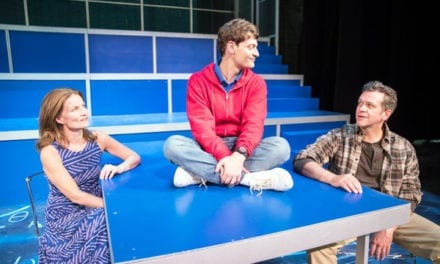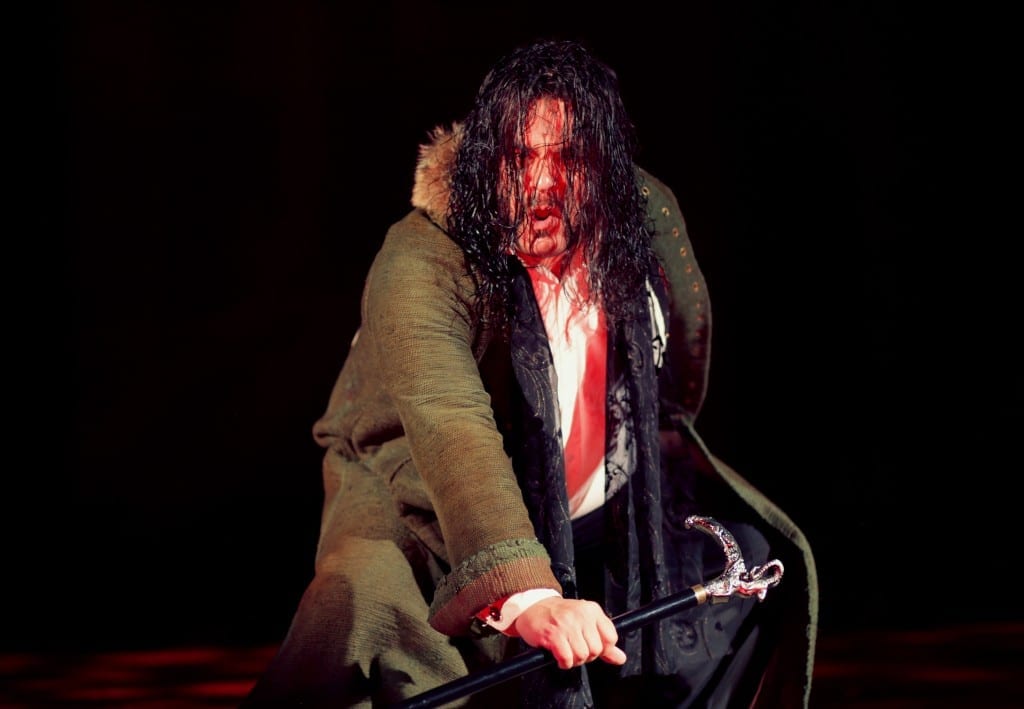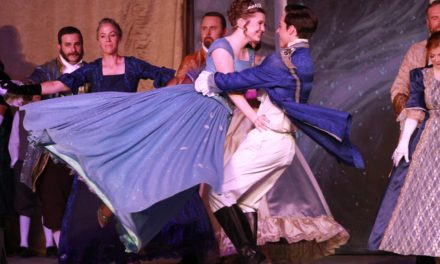OGDEN — Eurydice is a Greek mythical character married to Orpheus that experiences an untimely death, but whose story continues beyond the grave as her husband travels to the underworld to rescue her. In the 2003 play Eurydice, by Sarah Ruhl, the audience learns the story through the eyes and perspective of Eurydice. The story follows young lovers Eurydice (played by Katie Evans) and Orpheus (played by Enrique Garibsy) as they prepare and hold their wedding. Tragedy strikes as an interesting man (played by Joshua Robinson) has a hand in leading Eurydice to an untimely death where she faces the conflicts of staying in the underworld and returning to her beloved Orpheus. The Good Theatre Company’s production is directed by Nicole Finney, and runs 90 minutes with no intermission.
 As I came into the space that the Good Company Theatre calls home in downtown Ogden, I was very impressed with how nicely the warehouse has been developed into a versatile black box theatre. For Eurydice, the set is minimal but interesting in its appearance, consisting of a small ramp descending in the middle, with two separate side platforms that form the basis for different scenes both on earth and in the underworld. Set design by Emilio Casillas added to the story and provided an interesting backdrop for the action.
As I came into the space that the Good Company Theatre calls home in downtown Ogden, I was very impressed with how nicely the warehouse has been developed into a versatile black box theatre. For Eurydice, the set is minimal but interesting in its appearance, consisting of a small ramp descending in the middle, with two separate side platforms that form the basis for different scenes both on earth and in the underworld. Set design by Emilio Casillas added to the story and provided an interesting backdrop for the action.
In the underworld, the play introduces Eurydice’s father (played by Michael Solarez) and three stones: the loud stone (played by McKalle Dahl), the little stone (played by Seth Foster), and the big stone (played by Syndnie Schwarzwalder). Though I may not have completely grasped all that Ruhl was trying to say when she wrote Eurydice, the three stones were one of my favorite parts of the production. Much of their dialogue is recited in a synchronous fashion, and their timing, blending of spoken vocals, and portrayal of a deathly affect were eerie and intoxicating in nature. Dahl, Foster, and Schwarzwalder also seemed to play off each other well so that the lines that were not synchronous seemed to still have an almost melodic flow to them, as if the characters were physically and mentally connected. The character of the interesting man, played by Robinson, was aptly named, because there were aspects of his characterization that were puzzling and indeed intriguing. He starts out with a youthful representation and grows into more of an adult figure, though the transition is not easy to follow, making some of the story lines confusing.
Ruhl assumes that the audience already knows the backstory of the romance between Eurydice and Orpheus, but I found myself longing for a little more understanding of their own love and connection in order to better feel for the conflict that Eurydice faced when looking back at the life she had with Orpheus and the connection she had with her father. Solarez did an excellent job as a loving father trying to reconnect with his daughter, and I found the amount of time the playwright spent on that relationship lead to a deeper connection for me as an audience member with the father.
The technical aspects of this play were precise and hauntingly beautiful. Lighting design by William Peterson was fantastic, with strong elements switching between the earthly world and the underworld, which combined well with the sound design by Lydia Oliverson to show a strong difference between the two settings. Costume design by Alicia Washington was also fantastic, with surprising choices that meshed well with the work of the other designers.
While I am still pondering the overarching meaning of the production, the experience was very positive and thought provoking. The way people view life and death—and the loss and gain that come with both transitions—is certainly a question that has many viewpoints. Eurydice is another attempt for the human spirit to connect with the possibilities that lie ahead.





